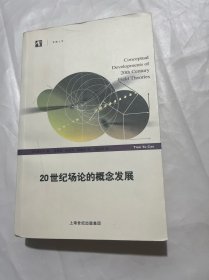
计算流体动力学导论(英文版)
¥ 115 八五品
仅1件
江苏无锡
认证卖家担保交易快速发货售后保障
作者H.K.Versteeg、W.Malalasekera 著
出版社世界图书出版公司
出版时间2000-06
版次1
装帧平装
上书时间2024-06-29
- 最新上架
商品详情
- 品相描述:八五品
图书标准信息
- 作者 H.K.Versteeg、W.Malalasekera 著
- 出版社 世界图书出版公司
- 出版时间 2000-06
- 版次 1
- ISBN 9787506247054
- 定价 47.00元
- 装帧 平装
- 开本 其他
- 纸张 胶版纸
- 页数 257页
- 【内容简介】
-
The use of computational fluid dynamics (CFD) to predict internal and external
flows has risen dramatically in the past decade. In the 1980s the solution of fluid flow problems by means of CFD was the domain of the academic, postdoctoral or
postgraduate researcher or the similarity trained specialist with many years of
grounding in the area. The widespread availability of engineering workstations
together with efficient solution algorithms and sophisticated pre- and post-
processing facilities enable the use of commercial CFD codes by graduate
engineers for research, development and design tasks in industry. The codes that
are now on the market may he extremely powerful, hut their operation still requires a high level of skill and understanding from the operator to obtain meaningful results in complex situations. The long learning curve, previously including apprenticeships of up to four years - more widely known as MPhil and PhD studies - meant that the users of the 1980s were, through their own experiences, very conscious of the limitations of CFD. However, the pressure on engineers in industry to come up with solutions to problems implies that there is not always the time available for the new type of user of the 1990s to learn about the pitfalls of CFD by osmosis and frequent failure. - 【目录】
-
Preface
Acknowledgements
1 Introduction
1.1 What is CFD?
1.2 How does a CFD code work?
1.3 Problem solving with CFD
1.4 Scope of this book
2 Conservation Laws of Fluid Motion and Boundary Condltions
2.1 Governing equations of fluid flow and heat transfer
2.1.1 Mass conservation in three dimensions
2.1.2 Rates of change following a fluid particle and for a fluid element
2.1.3 Momentum equation in three dimensions
2.1.4 Energy equation in three dimensions
2.2 Equations of state
2.3 Navier-Stokes equations for a Newtonian fluid
2.4 Conservative form of the governing equations of fluid flow
2.5 Differential and integral forms of the general transport equations
2.6 Classification of physical behaviour
2.7 The role of characteristics in hyperbolic equations
2.8 Classification method for simple partial differential equations
2.9 Classification of fluid flow equations
2.10 Auxiliary conditions for viscous fluid flow equations
2.11 Problems in transonic and supersonic compressible flows
2.12 Summary
3 Turbulence and Its Modelling
3.1 What is turbulence?
3.2 Transition from laminar to turbulent flow
3.3 Effect of turbulence on time-averaged Navier-Stokes equations
3.4 Characteristics of simple turbulent flows
3.4.1 Free turbulent flows
3.4.2 Flat plate boundary layer and pipe flow
3.4.3 Summary
3.5 Turbulence models
3.5.1 Mixing length model
3.5.2 The k-e model
3.5.3 Reynolds stress equation models
3.5.4 Algebraic stress equation models
3.5.5 Some recent advances
3.6 Final remarks
4 The Finite Volume Method for Diffusion Problems
4.1 Introduction
4.2 Finite volume method for one-dimensional steady state diffusion
4.3 Worked examples: one-dimensional steady state diffusion
4.4 Finite volume method for two-dimensional diffusion problems
4.5 Finite volume method for three-dimensional diffusion problems
4.6 Summary of discretised equations for diffusion problems
5 The Finite Volume Method for Convection-Diffusion Problems
5.1 Introduction
5.2 Steady one-dimensional convection and diffusion
5.3 The central differencing scheme
5.4 Properties of discretisation schemes
5.4.1 Conservativeness
5.4.2 Boundedness
5.4.3 Transportiveness
5.5 Assessment of the central differencing scheme for convection-diffusion problems
5.6 The upwind differencing scheme
5.6.1 Assessment of the upwind differencing scheme
5.7 The hybrid differencing scheme
5.7.1 Assessment of the hybrid differencing scheme
5.7.2 Hybrid differencing scheme for multi-dimensional convection-diffusion
5.8 The power-law scheme
5.9 Higher order differencing schemes for convection-diffusion problems 5.9.1 Quadratic upwind differencing scheme: the QUICK scheme
5.9.2 Assessment of the QUICK scheme
5.9.3 Stability problems of the QUICK scheme and remedies
5.9.4 General comments on the QUICK differencing scheme
5.10 Other higher order schemes
5.11 Summary
6 Solution Algorithms for Pressure-Veloelty Coupling in Steady Flows
6.1 Introduction
6.2 The staggered grid
6.3 The momentum equations
6.4 The SIMPLE algorithm
6.5 Assembly of a complete method
6.6 The SIMPLER algorithm
6.7 The SIMPLEC algorithm
6.8 The PISO algorithm
6.9 General comments on SIMPLE, SIMPLER, SIMPLEC and PISO
6.10 Summary
7 Solution of Discretised Equations
7.1 Introduction
7.2 The tri-diagonal matrix algorithm
7.3 Application of TDMA to two-dimensional problems
7.4 Application of the TDMA method to three-dimensional problems
7.5 Examples
7.6 Other solution techniques used in CFD
7.7 Summary
8 The Finite Volume Method for Unsteady Flows
8.1 Introduction
8.2 One-dimensional unsteady heat conduction
8.2.1 Explicit scheme
8.2.2 Crank-Nicolson scheme
8.2.3 The fully implicit scheme
8.3 Illustrative examples
8.4 Implicit method for two- and three-dimensional problems
8.5 Discretisation of transient convection-diffusion equation
8.6 Worked example of transient convection~tiffusion using QUICK differencing
8.7 Solution procedures for unsteady flow calculations
8.7.1 Transient SIMPLE
8.7.2 The transient PISO algorithm
8.8 Steady state calculations using the pseudo-transient approach
8.9 A brief work on other transient schemes
8.10 Summary
9 Implementation of Boundary Conditions
9.1 Introduction
9.2 Inlet boundary conditions
9.3 Outlet boundary conditions
9.4 Wall boundary conditions
9.5 The constant pressure boundary condition
9.6 Symmetry boundary condition
9.7 Periodic or cyclic boundary condition
9.8 Potential pitfalls and final remarks
10 Advanced Topics and Applications
10.1 Introduction
10.2 Combustion modelling
10.2.1 The simple chemical reacting system (SCRS)
10.2.2 Eddy break-up of model of combustion
10.2.3 Laminar flamelet model
10.3 Calculation of buoyant flows and flows inside buildings
10.4 The use of body-fitted co-ordinate systems in CFD procedures
10.5 Advanced applications
10.5.1 Flow in a sudden pipe contraction
10.5.2 Modelling of a fire in a test room
10.5.3 Prediction of flow and heat transfer in a complex tube matrix
10.5.4 Laminar flow in a circular pipe driven by periodic pressure variations
10.6 Concluding remarks
Appendix A Accuracy of a Flow Simulation
Appendix B Non-uniform Grids
Appendix C Calculation of Source Terms
References
Index
点击展开
点击收起
— 没有更多了 —




















以下为对购买帮助不大的评价